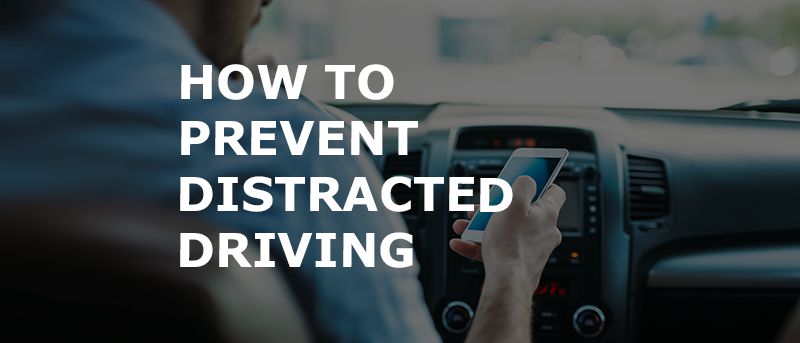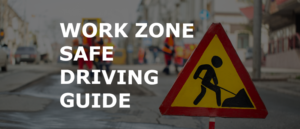Furry Friends Cause Trucking Border Delays At Canadian Border
To prevent reintroduction of rabies carried by dogs into the United States, new CDC regulations require proof of healthy pets at border crossing. Truckers who
We are a team of DOT Compliance and Licensing Professionals helping trucking and transportation companies remain safe, compliant, and profitable.
CNS or Compliance Navigation Specialists is DOT Compliance company that assists trucking and transportation companies remain DOT Compliant. We are part of a network of companies, CNS Companies, specializing in services related to the transportation, manufacturing, construction, service, education and medical industries.

A full-scale DOT Compliance Program managing a long haul carrier’s safety, compliance, licensing and more.
Learn more >>>
A DOT Compliance Program that keeps motor carriers compliant with the 6 Basic DOT Regulations required of all carriers.
Learn more >>>
Our Short-Haul/Construction Program is a full-scale program designed for private carriers that do not haul for-hire.
Learn more >>>
Our most comprehensive DOT Compliance Program, operating as your company’s off-site Safety Director or assisting your current safety personnel.
Learn more >>>
Our Non-CDL Program is a full-scale program managing safety, compliance, licensing and more for moving companies, couriers, landscapers, or any company subject to DOT regulations and does not employ CDL drivers.
Learn more >>>
Our DOT Audit Services cover a number of different types of DOT Audits that new and existing carriers will be subject to.
Our DOT Driver Services help trucking companies and carriers to stay compliant as they grow and hire more drivers.
Our DOT Vehicle Services focus on ensuring your vehicles are compliant with DOT Regulations, which is just as important as your drivers.
Our DOT Services for Special Carriers focus on companies outside of the typical motor carrier, like HAZMAT, Passenger and Bus Carriers.
CNS is part of a group of companies that offer other necessary services for the trucking and transportation industry, such as Commercial Trucking Insurance, CDL Training, Online Training Course, and even Healthcare.
Our DOT Licensing Services will cover you whether you are an existing company or just starting a trucking company. Our DOT Licensing Specialists can help you get up and running and in days with your DOT number, MC Authority, EIN, UCR, IFTA, 2290 HVUT, Fuel Taxes and can even set you up to get your Commercial Driver's License (CDL) with CNS Driver Training Center.
Our DOT Licensing Specialists will help you with every aspect of starting a trucking company. All you need to do is choose a name for your trucking company.
You will need to ensure your DOT Number, MC Authority, Vehicle Registration, etc. is all set up properly when you start your trucking business.
Our Licensing Specialists can help with all aspects of filing and renewing licenses, fuel taxes, etc.
CNS is part of a group of companies that offer other necessary services for the trucking and transportation industry, such as Commercial Trucking Insurance, CDL Training, Online Training Course, and even Healthcare.
To prevent reintroduction of rabies carried by dogs into the United States, new CDC regulations require proof of healthy pets at border crossing. Truckers who
CNS or Compliance Navigation Specialists is DOT Compliance company that assists trucking and transportation companies remain DOT Compliant. We are part of a network of companies, CNS Companies, specializing in services related to the transportation, manufacturing, construction, service, education and medical industries.
CNS Companies is a network of companies specializing in services related to the transportation, manufacturing, construction, service, education and medical industries. Our DOT Compliance division is handled by Compliance Navigation Specialists, CNS Insurance handles Commercial Truck Insurance, CDL training is managed by the CNS Driver Training Center and healthcare is managed by CNS Occupational Medicine.
We are a team of DOT Compliance and Licensing Professionals helping trucking and transportation companies remain safe, compliant, and profitable.
CNS or Compliance Navigation Specialists is DOT Compliance company that assists trucking and transportation companies remain DOT Compliant. We are part of a network of companies, CNS Companies, specializing in services related to the transportation, manufacturing, construction, service, education and medical industries.

A full-scale DOT Compliance Program managing a long haul carrier’s safety, compliance, licensing and more.
Learn more >>>
A DOT Compliance Program that keeps motor carriers compliant with the 6 Basic DOT Regulations required of all carriers.
Learn more >>>
Our Short-Haul/Construction Program is a full-scale program designed for private carriers that do not haul for-hire.
Learn more >>>
Our most comprehensive DOT Compliance Program, operating as your company’s off-site Safety Director or assisting your current safety personnel.
Learn more >>>
Our Non-CDL Program is a full-scale program managing safety, compliance, licensing and more for moving companies, couriers, landscapers, or any company subject to DOT regulations and does not employ CDL drivers.
Learn more >>>
Our DOT Audit Services cover a number of different types of DOT Audits that new and existing carriers will be subject to.
Our DOT Driver Services help trucking companies and carriers to stay compliant as they grow and hire more drivers.
Our DOT Vehicle Services focus on ensuring your vehicles are compliant with DOT Regulations, which is just as important as your drivers.
Our DOT Services for Special Carriers focus on companies outside of the typical motor carrier, like HAZMAT, Passenger and Bus Carriers.
CNS is part of a group of companies that offer other necessary services for the trucking and transportation industry, such as Commercial Trucking Insurance, CDL Training, Online Training Course, and even Healthcare.
Our DOT Licensing Services will cover you whether you are an existing company or just starting a trucking company. Our DOT Licensing Specialists can help you get up and running and in days with your DOT number, MC Authority, EIN, UCR, IFTA, 2290 HVUT, Fuel Taxes and can even set you up to get your Commercial Driver's License (CDL) with CNS Driver Training Center.
Our DOT Licensing Specialists will help you with every aspect of starting a trucking company. All you need to do is choose a name for your trucking company.
You will need to ensure your DOT Number, MC Authority, Vehicle Registration, etc. is all set up properly when you start your trucking business.
Our Licensing Specialists can help with all aspects of filing and renewing licenses, fuel taxes, etc.
CNS is part of a group of companies that offer other necessary services for the trucking and transportation industry, such as Commercial Trucking Insurance, CDL Training, Online Training Course, and even Healthcare.
To prevent reintroduction of rabies carried by dogs into the United States, new CDC regulations require proof of healthy pets at border crossing. Truckers who
CNS or Compliance Navigation Specialists is DOT Compliance company that assists trucking and transportation companies remain DOT Compliant. We are part of a network of companies, CNS Companies, specializing in services related to the transportation, manufacturing, construction, service, education and medical industries.
CNS Companies is a network of companies specializing in services related to the transportation, manufacturing, construction, service, education and medical industries. Our DOT Compliance division is handled by Compliance Navigation Specialists, CNS Insurance handles Commercial Truck Insurance, CDL training is managed by the CNS Driver Training Center and healthcare is managed by CNS Occupational Medicine.

Distracted driving is a major issue among all types of drivers but is an especially important concern for commercial motor vehicle drivers as it can lead to accidents, injuries, death, or excessive property damage.
These days the number of distractions that drivers are exposed to are endless and can include things like talking or texting on cell phones, CB radios, radios, eating, daydreaming, other drivers and so much more.
Distracted driving can cause slowed perception of certain traffic events, which in turn leads to a delayed reaction. Slow reaction times can lead to poor driver input, such as incorrect steering inputs, too much brake pressure or even inaccurate accelerator pressure.
To protect employees and reduce the risk associated with a carrier’s organization, commercial motor vehicle drivers should avoid distracted driving at all costs.
So, what can carriers do to prevent this problem?
To prevent distracted driving, let’s first explain the different types so we can be better prepared to look out for them.
According to the CDC, there are three main types of distraction:
A manual distraction is one that causes you to either take your hands off the wheel or take your eyes off the road.
There are several things that can divert your attention including handling the radio, eating, using your phone for texting, talking, taking pictures or even searching the internet. The most common physical distraction is any type of handheld device, whether it be a cell phone or an Electronic Logging Device (ELD).
A mental or cognitive distraction is anything that takes your mind off the road.
This could include having a conversation with a passenger, stress, anxiety or even daydreaming. When a driver is daydreaming or is under a lot of stress their mind could be wandering and is not focused on the most important thing, driving.
In many cases, a driver could even be mentally distracted due to a personal event that is causing anger or frustration. With their mind focused on their anger, they are lacking focus on the road and the many things that could be happening in and around their vehicle.
A visual distraction is anything that causes the driver to remove their eyes from the road, which could include texting or looking at things along the road as they drive, like billboards or animals. It is important to always keep your eyes on the road and restrict glances away from the road to one second or less.
We all know this by now, but it is worth saying again: Texting can be considered one of the most dangerous forms of distracted driving because it combines visual, manual, and cognitive distractions.
And the government takes this seriously.
Federal Motor Carrier Safety Regulations (FMCSRs) prohibit texting or the use of handheld devices while driving a commercial motor vehicle based on the 49 CFR Parts 383, 384, 390, 391 and 392.
The rule applies to drivers operating a commercial motor vehicle on a roadway, including moving forward or temporarily stationary because of traffic, traffic control devices, or other momentary delays.
A mounted phone is acceptable as long as it is mounted close to the driver.
Use the hands-free feature. To comply, a driver must:
However, drivers are not in compliance if they unsafely reach for a mobile phone, even if they intend to use the hands-free function.
If drivers receive citations for the use of handheld devices or employers allow or require drivers to use handheld devices while driving, the penalties incurred can be as much as $2,750 or $11,000, respectively.
If a driver receives multiple offenses within 3 years, the second offense leads to a 60-day driving disqualification and the third is a 120-day disqualification. However, on a state level, a driver’s Commercial Driver’s License (CDL) can be suspended after two or more serious traffic violations.
While there is an emergency exemption, it only allows you to use your hand-held mobile phones for communication with law enforcement officials or other emergency services.
So, how can carriers limit distracted driving?
The first step is to look over and update your company’s hand-free policy.
When taking/placing a hands-free call while driving:
Though federal, state and local laws permit hands free talking on a cell phone, a company policy should recommend employees limit their talk time for every conversation, and only accept calls that require immediate attention.
If a call is going to take time or require your full attention, terminate the call and resume when your vehicle is safely put in park.
The second step is regular driver training.
Underwriters look at many different risk factors and data provided to establish the potential risk levels and determine your insurance score, one of the primary factors in determining how much monthly insurance premium the consumer will incur.
After this analysis and determination of an insurance score, underwriters can provide a monthly premium estimate.
Teaching a driver through regular online training, such as “the hazards of distracted driving” or “how to do a pre-trip and post-trip inspection”, can help you keep your safety risk low.
Some of the easiest things to catch during a driver inspection are also the most common violations written up on a roadside inspection.
The more this information is top-of-mind for drivers, the better the chance they may drive safely.
Our DOT trainers offer a variety of in-person or online training courses tailored to the specific needs or weaknesses of your company and drivers.
For more information, contact us at 888.260.9448 or info@cnsprotects.com.

ATRI’s Research Advisory Committee (RAC) selected a diverse set of research priorities designed to address some of the industry’s most critical issues including workforce development,

Driving in road construction areas can be among the most dangerous type of driving you will encounter. Spring means warmer weather is here and construction

Motor carriers are responsible for ensuring that drivers are not operating while ill or fatigued. However, motor carriers, at their discretion, may authorize their drivers

In 2021, according to ATRI’s “Analysis of the Operational Costs of Trucking” report, the cost of trucking increased to its highest level ever in the
Our DOT Compliance Programs ensure it is your top priority and keeps your business running.
Receive the latest transportation and trucking industry information about FMCSA and DOT Audits, Regulations, etc.

ATRI’s Research Advisory Committee (RAC) selected a diverse set of research priorities designed to address some of the industry’s most critical issues including workforce development,

Driving in road construction areas can be among the most dangerous type of driving you will encounter. Spring means warmer weather is here and construction

Motor carriers are responsible for ensuring that drivers are not operating while ill or fatigued. However, motor carriers, at their discretion, may authorize their drivers
Join our monthly newsletter and stay up-to-date on trucking industry news and receive important compliance and licensing tips.
Join our monthly newsletter and stay up-to-date on trucking industry news and receive important compliance and licensing tips.